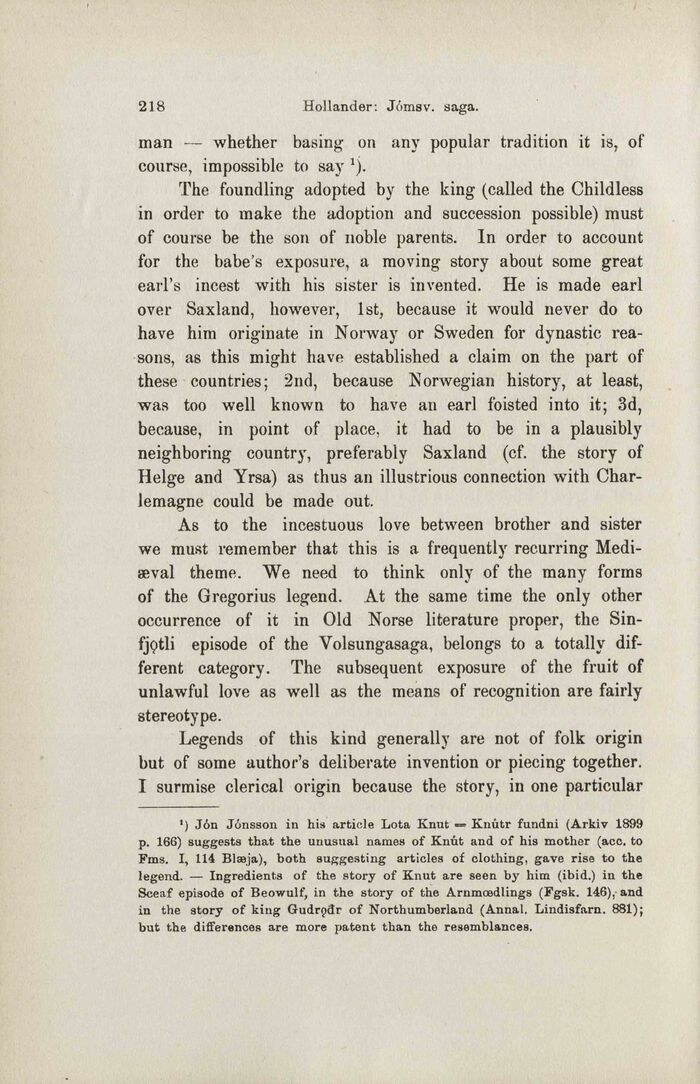
Full resolution (JPEG) - On this page / på denna sida - L. M. Hollander, Studies in the Jómsvíkingasaga - 3. Biblical Sources of the First þáttr

<< prev. page << föreg. sida << >> nästa sida >> next page >>
Below is the raw OCR text
from the above scanned image.
Do you see an error? Proofread the page now!
Här nedan syns maskintolkade texten från faksimilbilden ovan.
Ser du något fel? Korrekturläs sidan nu!
This page has never been proofread. / Denna sida har aldrig korrekturlästs.
218 Hollander: Jómsv. saga.
man — whether basing on any popular tradition it is, of
course, impossible to say *).
The foundling adopted by the king (called the Childless
in order to make the adoption and succession possible) must
of course be the son of noble parents. In order to account
for the babe’s exposure, a moving story about some great
earl’s incest with his sister is invented. He is made earl
over Saxland, however, 1st, because it would never do to
have him originate in Norway or Sweden for dynastic rea-
sons, as this might have established a claim on the part of
these countries; 2nd, because Norwegian history, at least,
was too well known to have an earl foisted into it; 3d,
because, in point of place, it had to be in a plausibly
neighboring country, preferably Saxland (cf. the story of
Helge and Yrsa) as thus an illustrious connection with Char-
lemagne could be made out.
As to the incestuous love between brother and sister
we must remember that this is a frequently recurring Medi-
aeval theme. We need to think only of the many forms
of the Gregorius legend. At the same time the only other
occurrence of it in Old Norse literature proper, the Sin-
fjçtli episode of the Yolsungasaga, belongs to a totally dif-
ferent category. The subsequent exposure of the fruit of
unlawful love as well as the means of recognition are fairly
stereotype.
Legends of this kind generally are not of folk origin
but of some author’s deliberate invention or piecing together.
I surmise clerical origin because the story, in one particular
x) Jón Jónsson in his article Lota Knut — Knùtr fundni (Arkiv 1899
p. 166) suggests that the unusual names of Knút and of his mother (acc. to
Fms. I, 114 Blæja), both suggesting articles of clothing, gave rise to the
legend. — Ingredients of the story of Knut are seen by him (ibid.) in the
Sceaf episode of Beowulf, in the story of the Arnmcedlings (Fgsk. 146), and
in the story of king Gudrpdr of Northumberland (Annal. Lindisfarn. 881);
but the differences are more patent than the resemblances.
<< prev. page << föreg. sida << >> nästa sida >> next page >>